Wind and Truth (Stormlight Archive 5)
By Catherine Hall
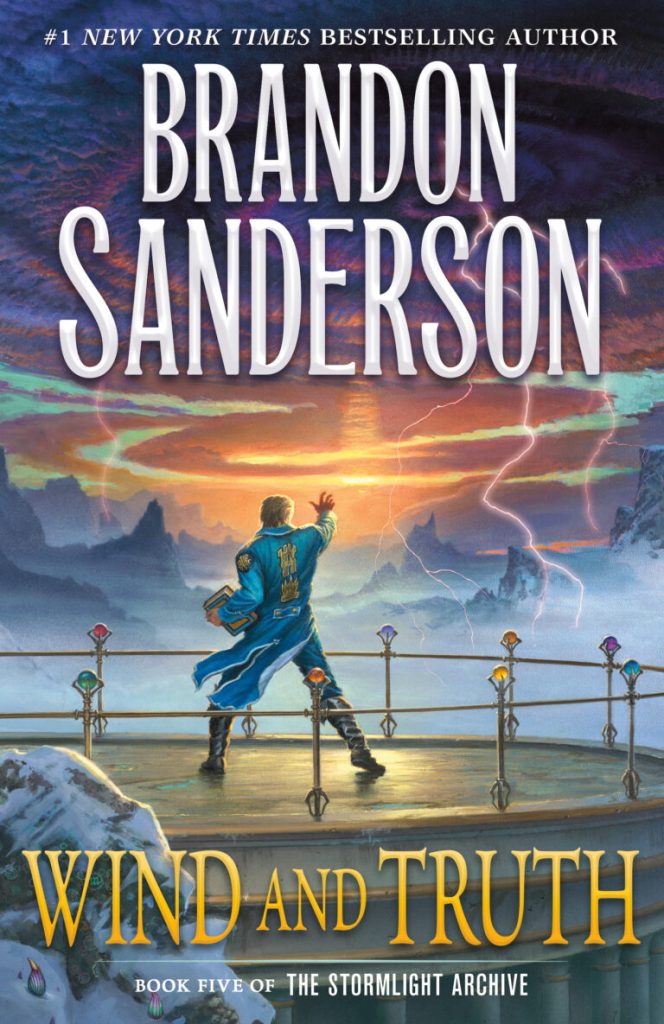
Anyone even remotely interested in fantasy will no doubt have heard of Brandon Sanderson’s bestselling epic, The Stormlight Archive. Since 2010, the series has become a pillar of the genre breaking multiple records, with the second tome, Word of Radiance, being the highest-rated book ever on Goodreads. At a total word count of around 2,280,000 (so far) it’s also the series most likely to cause your bookshelf to collapse. The fifth installment, Wind and Truth, released on December 6th, was by far the most anticipated fantasy release of the year. Though as a long-time fan of the series I may be biased, it really only took me a few chapters to realize that all the hype was more than deserved.
The story picks up where the previous book left off, with Dalinar Kholin’s high-stakes challenge to the god Odium looming over Roshar. With only ten days to prepare for a contest that will determine the fate of their world—and potentially even the entire Cosmere—our heroes, the Knights Radiant, find themselves in a race against time that will leave you on the edge of your seat. The book is the very definition of epic, though Sanderson skillfully balances world-shaking events with intimate character moments, which is all the more impressive given the host of characters involved. Where Sanderson stumbles a little is in juggling the numerous points of view. He mastered this technique in previous volumes, but due to the timeline and structure of Wind and Truth, he switches between points of view much more frequently, sometimes even within the same scene, which can make it difficult to ground oneself in a specific moment.
Nevertheless, Wind and Truth is one of Sanderson’s finest achievements to date, especially in terms of worldbuilding (the connections made between other Cosmere books will blow away die-hard fans), and further cements The Stormlight Archive’s status as one of the greatest tales of modern fantasy. Wind and Truth also marks the end of the first phase of the story and provides many satisfying conclusions while setting the stage for the second half of the series. The next installment will likely be released in 2031 at the earliest, so it will be a long wait, but one that will no doubt be absolutely worth it.
Other recommendations:
The Collected Poems of J.R.R. Tolkien edited by Christina Scull and Wayne G. Hammond
Spear by Nicola Griffith
The Darkest Part of the Forest by Holly Black
Dune: Part Two directed by Denis Villeneuve
Arcane Saison 2
Par Magdalena Nitchi
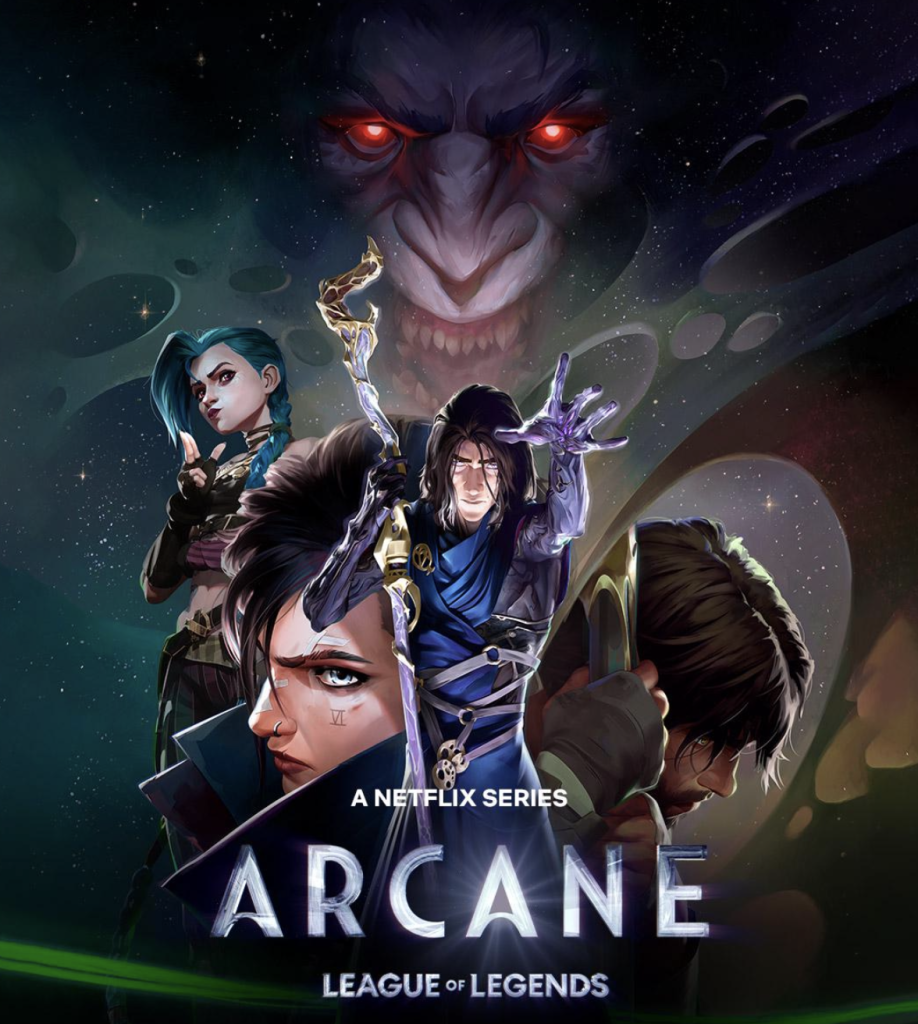
De nombreux jeux vidéo ont été adaptés récemment en films et séries, mais l’extraordinaire Arcane les surpasse tous. La première saison a remporté 4 Emmys en 2022, et la deuxième saison a dépassé mes attentes. L’animation est toujours de haute qualité, ce qui fait de leur style particulier avec des couleurs fortes et maussades un triomphe. Arcane montre un fort amour pour son matériel source mais n’a pas peur de s’en écarter, ce qui en fait l’une des meilleures adaptations SF/F d’un jeu vidéo que j’ai vu. Dans la deuxième saison, l’intrigue et les méditations philosophiques sur la politique, la magie, et ce qui signifie l’humanité, sont encore plus profondes.
Cette saison débute avec une reprise du moment final de la première, où Jinx place une pierre précieuse magique dans un lance-roquettes et vise le conseil de Piltover. Zaun et Piltover sont sous le choc, et la tension croissante entre les deux villes explose, entraînant des représailles brutales contre Zaun. Cependant, quelque chose de plus se prépare : le mystérieux Hexcore, qui s’est révélé à la fois extrêmement puissant et dangereux, a évolué, et Victor, Jayce et Mel sont sur le point d’apprendre à quel point sa magie peut être imprévisible. Il ne s’agit plus seulement des deux villes ; maintenant, le sort du monde entier est en jeu.
Il est difficile d’exprimer à quel point cette série est un chef-d’œuvre. J’ai été particulièrement impressionné par la construction des personnages; les histoires des protagonistes sont savamment entrelacées et parfaitement équilibrées, et même les personnages secondaires ont leurs propres arcs. Peu importe si leurs actions sont positives ou négatives, je ne peux m’empêcher d’aimer la plupart d’entre eux. Après le premier visionnement de la série, je vous recommande de choisir un personnage d’arrière-plan et de vous y pencher pour quelques épisodes. Les scénaristes et les animateurs ont clairement prêté attention aux détails les plus infinitésimaux de la série et leur travail acharné a été extrêmement payant.
Si vous ne deviez regarder qu’un seul média sorti cette année, ça devrait être Arcane. Les visuels, la narration et la construction du monde sont si bien réussis qu’elle sera probablement la pierre angulaire des adaptations médiatiques SF/F pendant longtemps.
Autres recommandations:
Alien: Romulus dirigé par Fede Álvarez
I Saw The TV Glow dirigé par Jane Schoenbrun
Overcity par Dave Côté
La Chèvre Noire par Mélodie Joseph
High Times in the Low Parliament par Kelly Robson
Firefly
By Fred Azeredo
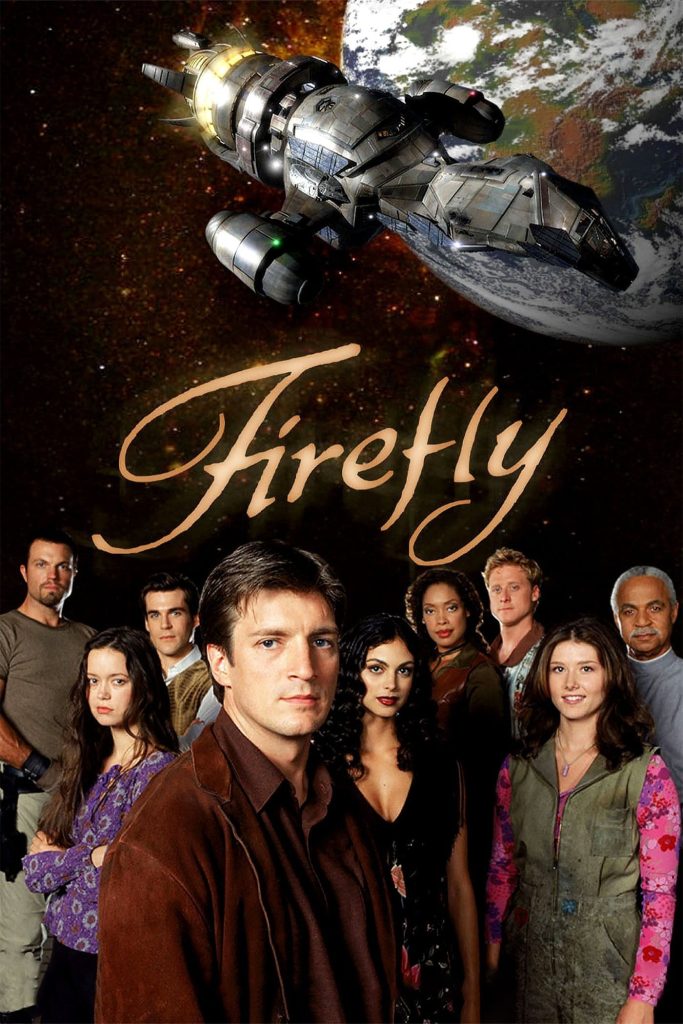
2024 was the year I finally discovered Firefly, and I keep asking myself: why did it take me this long?
The truth is, I was already well aware Firefly existed, of course. It’s omnipresent in pop culture discourse to the extent that I already knew most of the plot and characters; I even vaguely recall watching the pilot some years back. The basic premise of a ragtag band of smugglers dodging the authorities aboard a rinky-dink spaceship has influenced everything from Guardians of the Galaxy to The Expanse. I had just never really connected with it nor fully understood what a remarkable storytelling achievement it represents. Much like Lost (another show from the early 2000s I came around to eventually), Firefly introduces a seemingly unwieldy ensemble and gives them all distinct, satisfying emotional arcs without holding back on genre thrills—quite an achievement then, and almost miraculous now.
Firefly is also unafraid to be weird and even occasionally off-putting in a way that feels fresh in this age of algorithmic content. Its finale, “Objects in Space,” features a bounty hunter who alternates between terrifying threats of violence and whimsical musings about medical qualifications. The fusion of SF and Westerns is far more literal here than in something like Star Wars, right down to the country-styled opening theme. This allows the show to go from an episode featuring a high society ball and a duel to one with a high-tech hospital heist and creepy cyborg assassins with enviable effortlessness. Its tone is something all its own; even Joss Whedon’s other works don’t really compare.
Of course, the most famous thing about Firefly is its notorious premature cancellation, certainly the stupidest programming decision Fox ever made—and this is Fox we’re talking about. There’s no denying that some of Firefly’s mythical appeal comes from its tragically short run, but I don’t think that’s necessarily bad. Imagine how sad it would be to see Serenity’s once-vibrant crew trundling through an idea-starved tenth season. No, I like Firefly just the way it is: a snapshot of near-perfect storytelling neatly preserved in amber at the precise moment when it knew exactly what it was and what it wanted to do. Now, if you’ll excuse me, I’m off to watch “Out of Gas” for the umpteenth time.
Other recommendations:
The Power Fantasy by Kieron Gillen
Close Your Eyes directed by Victor Erice
Shogun created by Rachel Kondo and Justin Marks
Indiana Jones and the Great Circle directed by Jerk Gustafsson and Axel Torvenius
House of Leaves
By Imogen Chambers
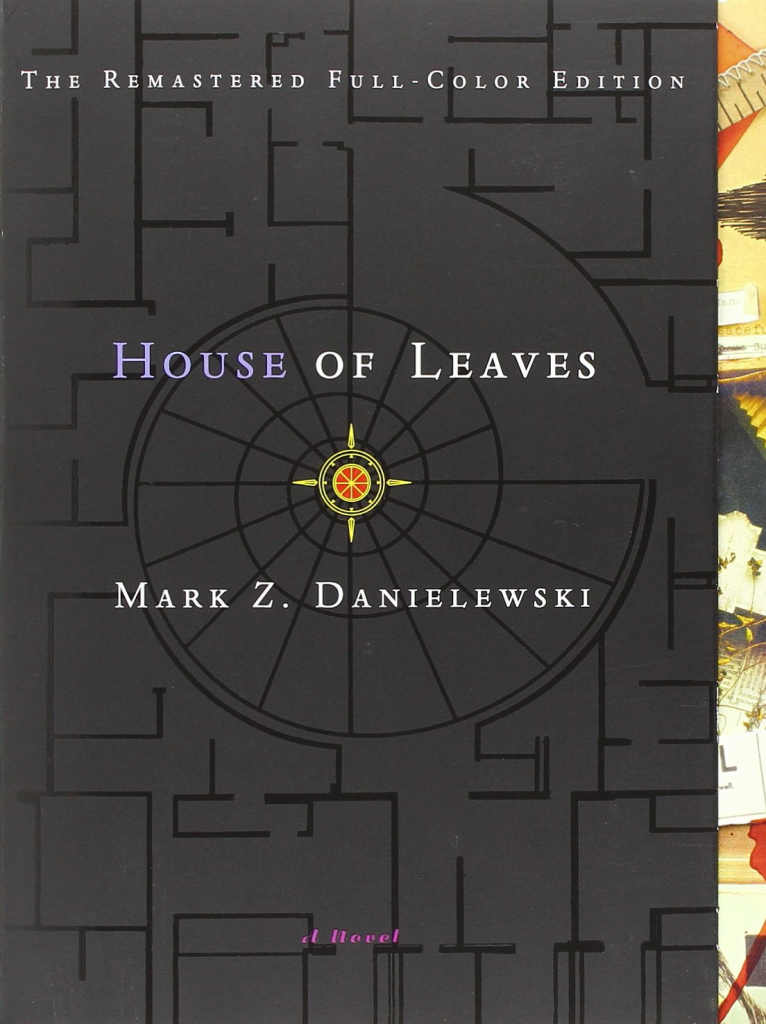
In October, I picked up Mark Z. Danielewski’s cult classic House of Leaves for the first time, and I have not stopped thinking about it since. At once liminal and cosmic horror, academic spoof, tragedy, and love story, Danielewski’s 2000 debut stands as an ergodic and postmodern masterpiece that leads its readers down labyrinthine rabbit holes of speculation. The narrative is multilayered and non-linear, shifting rapidly between narrative voices, text and footnote, and appendix and index. Admittedly, this book is certainly one to which you must dedicate your time. I found myself perusing obscure Reddit
To summarize House of Leaves, however, proves a complex task. At surface level, the book tells the story of photojournalist Will Navidson, who, upon relocating his family to Virginia, quickly discovers their new home to be ¼” larger on the inside than the outside. When a mysterious corridor appears within its walls, an unsettling investigation–retold via the medium of Navidson’s documentary–ensues. In turn, Johnny Truant, a troubled and aimless tattoo apprentice, discovers an academic article about this same intriguing documentary and soon becomes consumed by the mystery of the house. As Johnny reads, his thoughts pervade the narration of The Navidson Record, and his often-rambling footnotes become entangled with the already abundant narrative voices found within its pages. Thus, a complex and astounding novel takes root.
If I may offer one piece of advice, it would be to approach House of Leaves not simply as a novel; it most certainly is not, whether visually, narratively, or otherwise. Explore its references at your leisure, listen on repeat to the accompanying album by Danielewski’s sister Poe, and lose yourself in the experience of its reading. If by the end, you feel like you can relate at least the slightest bit to Johnny, then this uncanny and mind-boggling novel has done its job–you, too, are at the mercy of the house.
Other recommendations:
Coraline directed by Henry Selick
Orphan Black created by Graeme Manson and John Fawcett
Alan Wake franchise
Piranesi by Susanna Clarke
The End of Mr Y by Scarlett Thomas
Embassytown by China Miéville
Cloud Cuckoo Land
By Salma Galal
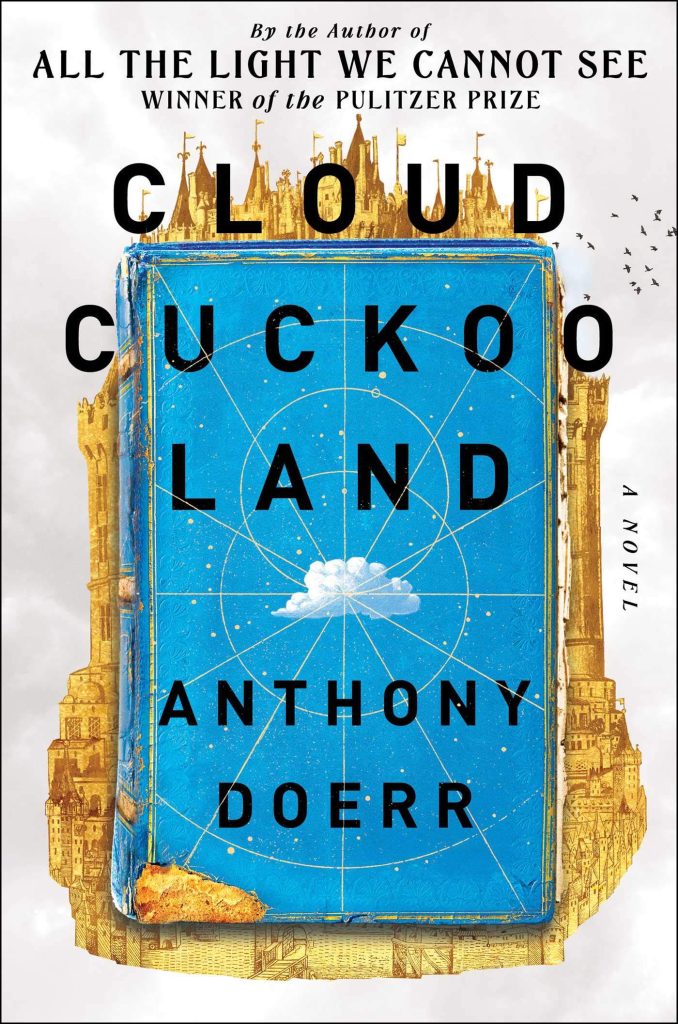
In a sea of monotonous Greek myth retellings, Anthony Doerr’s novel Cloud Cuckoo Land crests a triumphant wave with its narrative originality. Having adored Doerr’s previous novel, and desperate for a fresh take on the genre, I dove right in.
The novel’s invented myth, attributed to Antonious Diogenes, centres on the elderly shepherd Aethon. After seeing Aristophanes’ production of The Birds, he believes the mentioned “cloud cuckoo land” to be a real utopia. Aethon lives as a man, a donkey, a fish, and a bird. This eclectic tale serves as the binding thread for the five protagonists: a codices collector in Constantinople, an Ottoman farmer-turned-soldier, a Korean war veteran who translates Ancient Greek, a budding teenage eco-terrorist, and a girl stranded on the Argos, a 22nd-century ship in search of humankind’s new home.
At 578 pages, it’s an intimidating read, but the prose is so commanding it’s addictive; the perfect blend of lavish description with fast-paced action makes scenes pass by fluidly yet memorably. I still remember when the Virgin Mary’s icon was paraded through Constantinople. And the versatility of the genres Doerr covers! He renders all settings vividly enough to ensure that lovers of sci-fi, mythology, historical fiction, and war stories alike can satiate themselves.
At their core, all the protagonists long for escape and idealism. In a meta-fictional manner, it’s the crux of the novel. However, what draws the reader fully into being emotionally invested is the groundedness of the characters. Anna’s quest for more stories, Omeir’s devotion to his beloved oxen, Zeno’s desire for community, Seymour’s rage at how carelessly the government treats the earth, and Konstance’s strife to ensure the preservation of humankind’s story beyond mere survival. Their ability to envision transcension is rooted in their humanity.
What elevates this book from excellent to masterful is the significance of Aethon’s story itself. While the emphasis on different perspectives in classic myths is important, we may also neglect the chance to concentrate on original invention. Cloud Cuckoo Land is an electric reminder to embrace imagination and remember that its existence hinges upon the lightness of being human.
Other recommendations:
Arcane created by Christian Linke and Alex Yee
Dune: Part Two directed by Denis Villeneuve
Nosferatu directed by Robert Eggers
